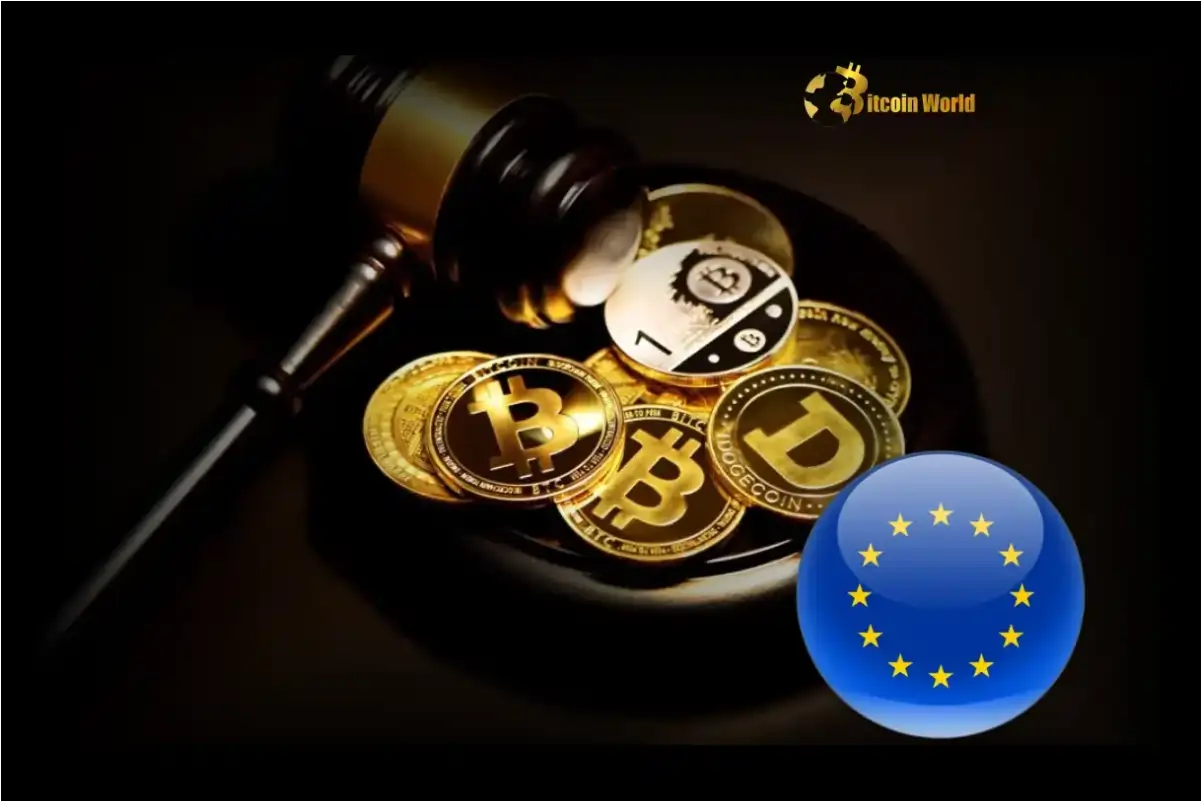Alarming Crypto Policy Risks: EU Regulators Warn Against US Approach
0
0

Are you invested in crypto or keeping a close eye on global financial trends? Then you need to pay attention to a significant development brewing across the Atlantic. European Union regulators are raising a red flag about the United States’ approach to crypto, and their warnings could have ripple effects across the entire digital asset landscape. Let’s dive into why the EU is sounding the alarm and what it means for the future of crypto.
EU Regulators Sound the Alarm on Crypto Policy Risks
A joint report from the European Securities and Markets Authority (ESMA), the European Banking Authority (EBA), and the European Insurance and Occupational Pensions Authority (EIOPA) has highlighted growing concerns in Europe regarding the potential crypto policy risks emanating from the United States. The core issue? The EU regulators believe that the U.S.’s relatively welcoming stance towards cryptocurrencies might inadvertently amplify risks within the broader financial markets. This concern stems from the increasing interconnectedness between the burgeoning crypto world and traditional financial systems.
Think of it like this: as crypto becomes more integrated into mainstream finance, any turbulence in the crypto market could more easily spill over into the traditional economy. The European regulators are essentially saying, “Hold on, are we moving too fast here? Are we fully prepared for the potential fallout?”
Why Do EU Regulators Fear the US Crypto Policy?
So, what exactly are the EU regulators worried about when it comes to the US crypto policy? The report pinpoints a few key areas:
- Volatility of Crypto Assets: Cryptocurrencies are known for their price swings. The report emphasizes the inherently volatile nature of crypto valuations. This volatility, if unchecked and intertwined with traditional finance, could introduce instability into the wider financial system.
- Increased Institutional Adoption: While institutional adoption is often seen as a sign of crypto’s maturation, EU regulators view it with caution. Greater involvement of institutional investors means larger sums of money are at play, and any crypto market downturn could have a more significant impact on these institutions and, consequently, the overall financial stability.
- Deepening Ties to Traditional Finance: The crux of the concern lies in the deepening links between crypto and traditional finance. As more traditional financial institutions offer crypto-related products and services, the boundary between the two blurs. This interconnectedness, while potentially fostering innovation, also amplifies systemic risk.
In essence, the EU regulators are advocating for a more cautious and perhaps stricter approach to crypto regulation, especially as it interfaces with the established financial world. They are not necessarily anti-crypto, but they are prioritizing financial stability and consumer protection.
Financial Market Risks: The Domino Effect of Crypto Integration
The term financial market risks is central to the EU regulators’ warning. What kind of risks are they envisioning? Let’s break it down:
| Risk Category | Description | Potential Impact |
|---|---|---|
| Systemic Risk | The risk that the failure of one financial institution or market participant could trigger a cascade of failures across the entire system. | Widespread financial instability, potential economic recession. |
| Market Volatility Risk | The risk of sudden and significant price drops in crypto assets. | Losses for investors, potential contagion to traditional markets if interconnected. |
| Operational Risk | Risks associated with the operation of crypto platforms, exchanges, and custody services, including cyberattacks, fraud, and technical failures. | Loss of funds, disruption of services, erosion of trust in the crypto ecosystem. |
| Regulatory Arbitrage Risk | The risk that crypto firms might exploit differences in regulations across jurisdictions to avoid stricter rules. | Weakening of regulatory oversight, increased opportunities for illicit activities. |
The EU regulators are keen to prevent these risks from materializing and believe that a proactive regulatory approach is essential. They are observing the U.S. approach with a critical eye, concerned that a more lenient stance could inadvertently increase these vulnerabilities.
The Digital Euro: Europe’s Answer to Crypto Concerns?
Adding another layer to this discussion is the European Central Bank’s (ECB) push for a digital euro. ECB board member Piero Cipollone, as reported by CoinDesk, has also voiced concerns about the speculative nature of cryptocurrencies and the risks associated with U.S.-backed stablecoins. His advocacy for a digital euro can be seen as part of Europe’s strategy to address these concerns.
Why a digital euro? Here’s the thinking:
- Control and Stability: A digital euro, issued and controlled by the ECB, would provide a stable and regulated digital currency alternative to private cryptocurrencies and stablecoins.
- Reduced Reliance on Foreign Stablecoins: Concerns about U.S.-backed stablecoins potentially dominating the digital payment landscape in Europe are also at play. A digital euro could offer a European alternative, maintaining monetary sovereignty.
- Innovation and Efficiency: A digital euro could foster innovation in payments and financial services within the Eurozone, potentially offering a more efficient and secure payment system.
In essence, the digital euro is not just about keeping up with the digital age; it’s also about asserting European control and mitigating perceived risks associated with the broader crypto ecosystem, particularly those linked to US crypto policy and stablecoins.
Navigating the Complex Landscape of Crypto Regulation
The contrasting approaches between the EU and the US on crypto regulation highlight the complex and evolving nature of this space. While the U.S. appears to be taking a more industry-friendly approach, seeking to foster innovation while managing risks, the EU is prioritizing financial stability and consumer protection, potentially leaning towards a more cautious regulatory framework.
For crypto investors, businesses, and policymakers alike, understanding these differing perspectives is crucial. Here are a few actionable insights:
- Stay Informed: Keep abreast of regulatory developments in both the EU and the US, as these will significantly impact the crypto landscape.
- Risk Management is Key: Given the inherent volatility and regulatory uncertainties, robust risk management strategies are essential for crypto investments and businesses.
- Global Perspective: Recognize that crypto regulation is a global issue, and different jurisdictions will adopt varying approaches. A global perspective is vital for navigating this complex environment.
- Engage in Dialogue: For industry participants, engaging in constructive dialogue with regulators is crucial to shaping sensible and effective crypto policies.
The EU regulators’ warning serves as a potent reminder that the journey of crypto into the mainstream is not without its bumps and potential hazards. A balanced approach, carefully weighing innovation against financial stability and consumer protection, is paramount to ensure the sustainable and responsible growth of the crypto ecosystem.
To learn more about the latest crypto regulation trends, explore our article on key developments shaping crypto regulatory landscape.
0
0
 Manage all your crypto, NFT and DeFi from one place
Manage all your crypto, NFT and DeFi from one placeSecurely connect the portfolio you’re using to start.





